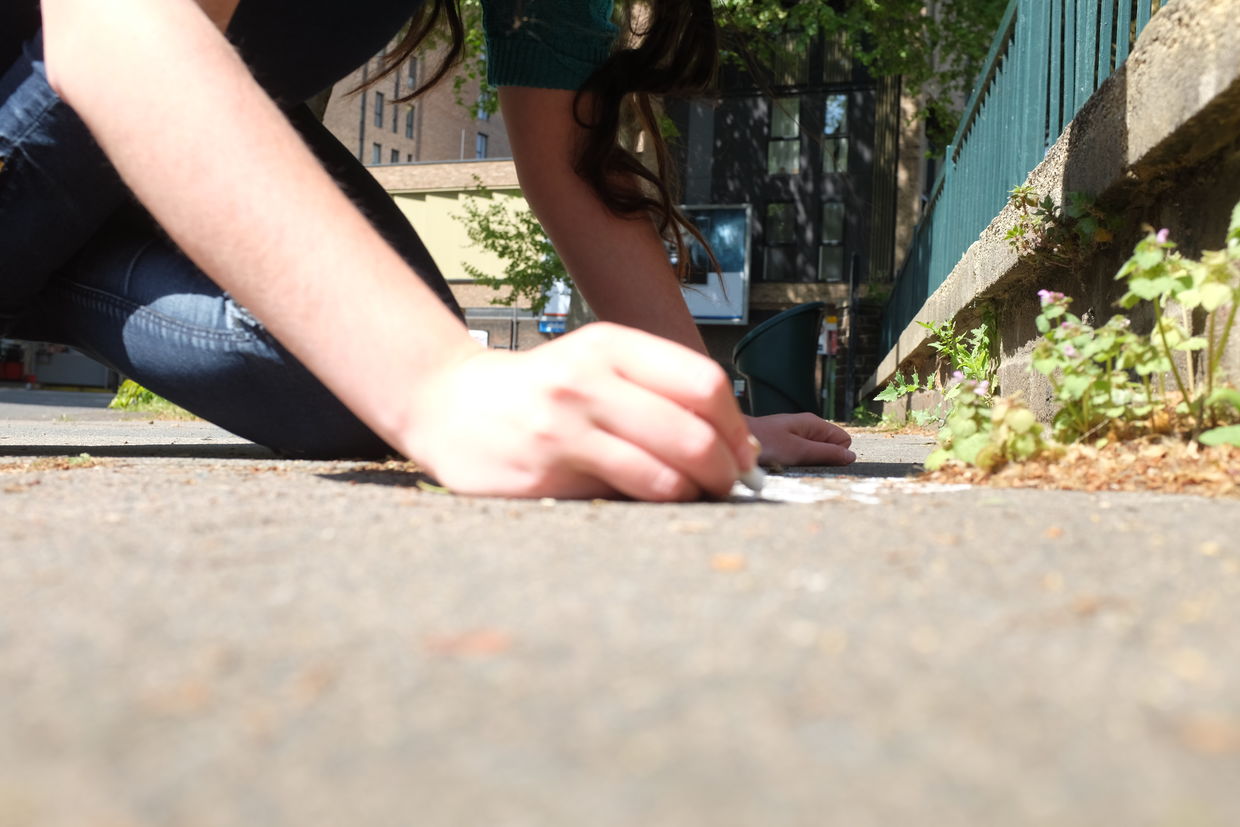
(Courtesy of Sophie Leguil / More Than Weeds)
Have you ever stopped to notice a tiny flower growing in the cracks of the sidewalk or studied a vine clambering up a chain link fence? In cities, asphalt is king and these bursts of nature are often unseen. Yet if you look closely, you may glimpse an abundance and variety of wildflowers growing right under your feet.
There are a handful of botanists and nature enthusiasts who are determined to show that flora growing out of the cracks in walls, pavement, and grates are not just weeds – they are a flourishing expression of nature and deserve more respect.
Boris Presseq, a botanist from the Toulouse Museum, was the first to create awareness by identifying wildflowers with chalk. Nicknamed a “rebel botanist,” Presseq names urban plants by chalking their names beside them. As seen on Brut Media, his method has garnered a lot of positive attention.
Presseq feels compelled to notice every leaf and bud when he is walking the city streets. He wants others to develop this awareness, explaining to Brut Media that the moment we name something, we give it an existence. All plants are important – not only are they the basis of the food chain, they produce oxygen, assist in removing pollution, and provide food and shelter for insects and birds.
Enter Sophie Leguil. She had been so inspired by Presseq’s work, she decided to start the " More Than Weeds” campaign when she moved from France to London, England. Leguil was also motivated by the work of Sauvages de ma Rue (wildflowers of my street). This French grassroots organization enables citizens to identify plants in their city and upload them. According to More Than Weeds, 100,000 records including 340 species were sent to Sauvages de ma Rue. The French organization also offers guided walks and a free course online called Herbes Folles which has attracted 10,000 people.
The weed scene in London, Leguil soon discovered, is a bit different. In 2019, the use of glyphosate-based weed killers were banned in France according to Nature, resulting in a new greening of French city streets as urban plants sprouted and flowered unheeded. England is now coming on board.
Cities and towns in Britain are adopting this policy, with London boroughs starting to implement a pesticide-free policy according to the organization Pesticide Action Network UK. Leguil’s other battle is with the law: graffiti chalking is illegal in London. However, the city of Hackney has made an exception, permitting Leguil to freely take to the streets, chalk in hand.
To whomever is chalking names and descriptions of trees on the pavements across Walthamstow. I love you. This made my heart sing today. pic.twitter.com/6lmauYeQVD
— Elizabeth Archer (@edarcherthinks) April 7, 2020
Recently, Leguil, in association with the South London Botanical Institute, gave a Zoom tour of pavement plants. She hopes to soon hit the streets with live urban plant walks and aims to publish a guide. She encourages people to share their finds on social media to help generate awareness in Britain, other parts of Europe, and the US.
Until the rebel botanists’ chalk appeared on the pavement, urban wild plants were for the most part unloved or a thought of as a nuisance. However, every plant has an important role, especially to herbalists. The More Than Weeds website identifies chickweed, shepherd’s purse, and red dead nettle as some of the recent sidewalk finds, and all of these are valuable.
According to the organization Natural Medicinal Herbs, the young leaves of chickweed are great in salads and herbalists use it therapeutically to heal wounds and itchiness. Shepherd’s purse can be made into a tea to stop bleeding, while the young leaves of red dead nettle can be eaten raw, cooked or placed on the skin to assist healing wounds.
Next time you go out for a walk, look down. There is a fascinating plant world right outside the doorstep – and if you live in London, just follow the chalk markings pointing the way to natural treasures.
YOU MIGHT ALSO LIKE:
School Buses Turned Gardens are Popping up Everywhere
5 Essential Oils That May Increase Happiness
How to Start an Easy Indoor Herb Garden in Your Kitchen







